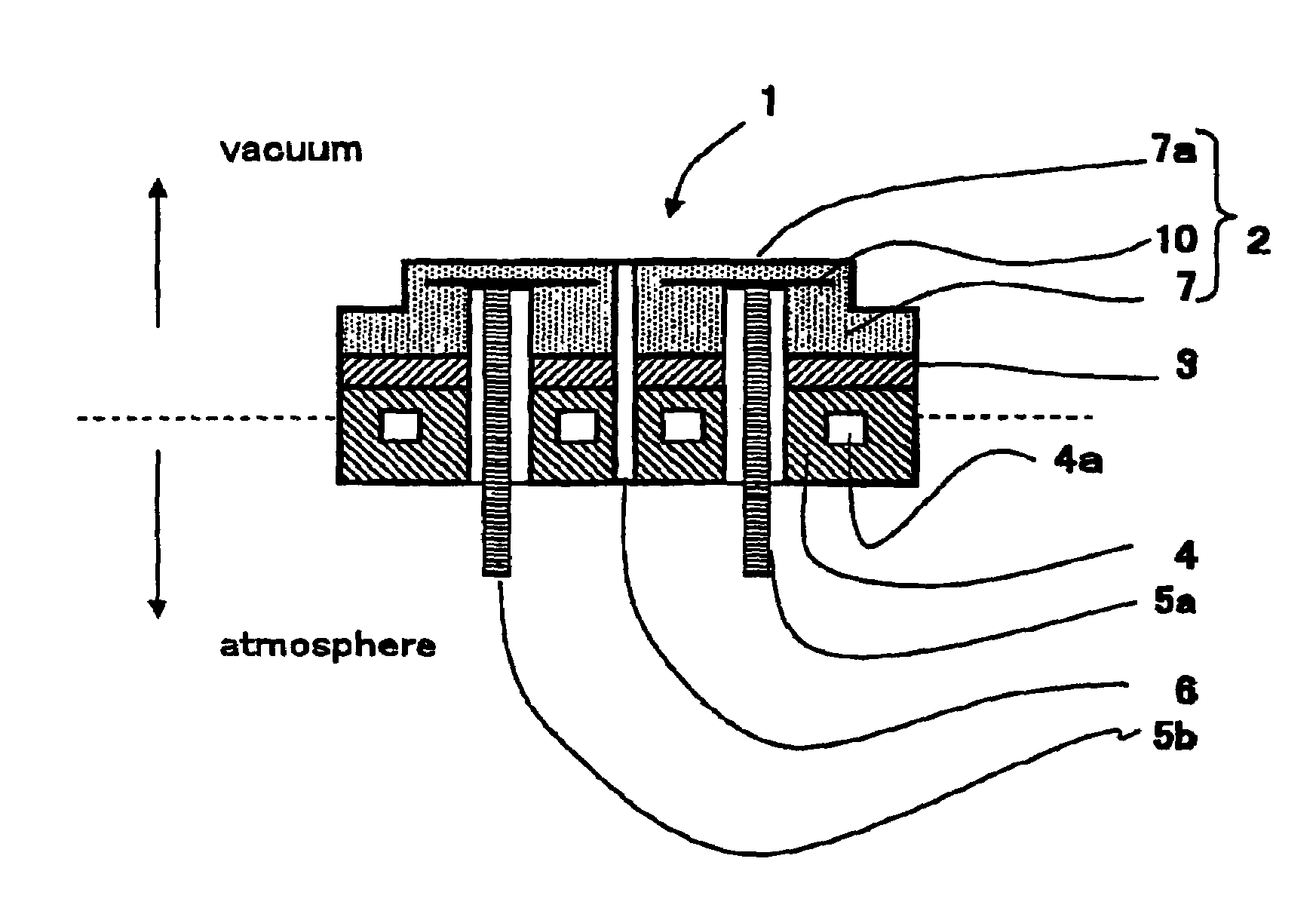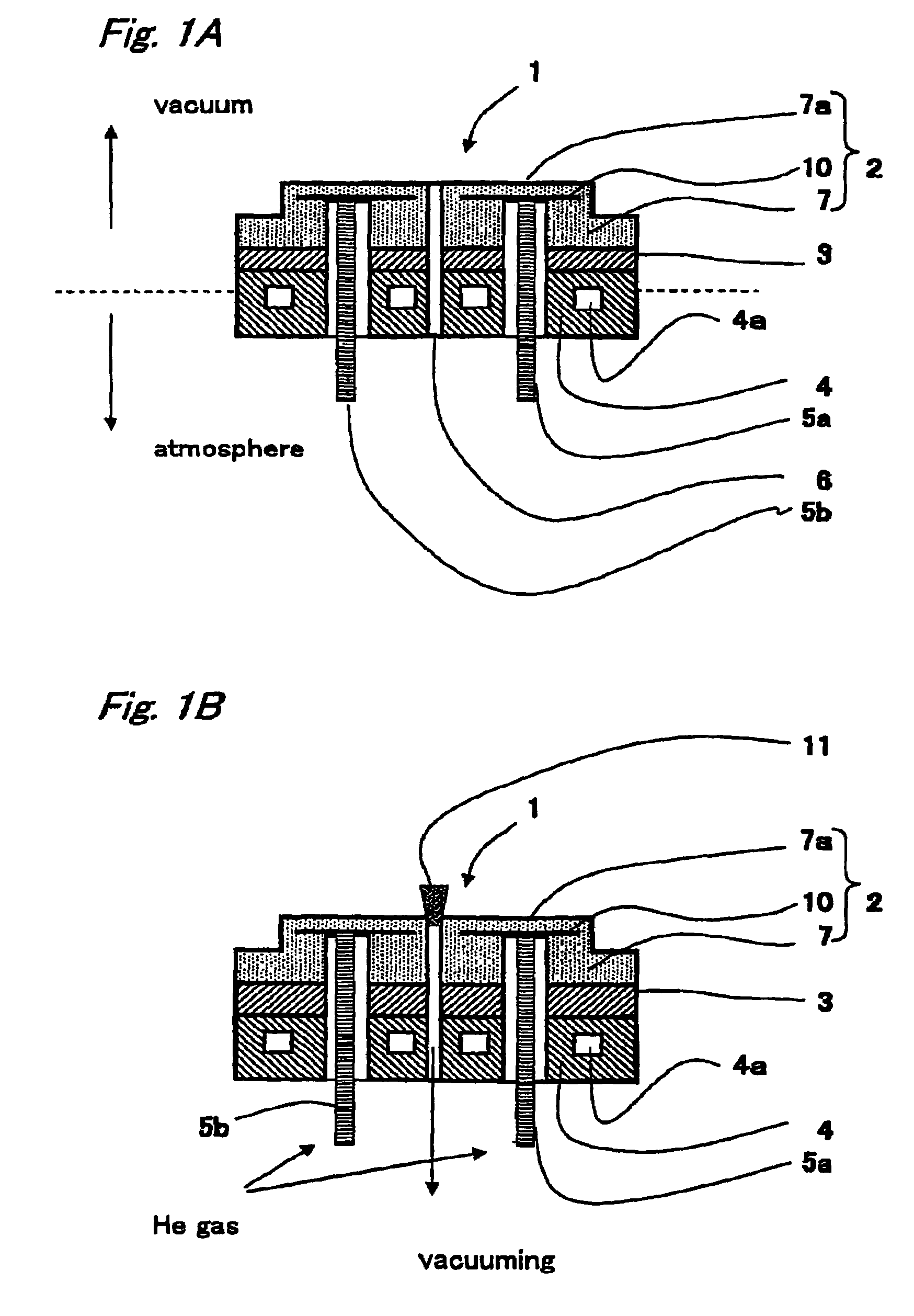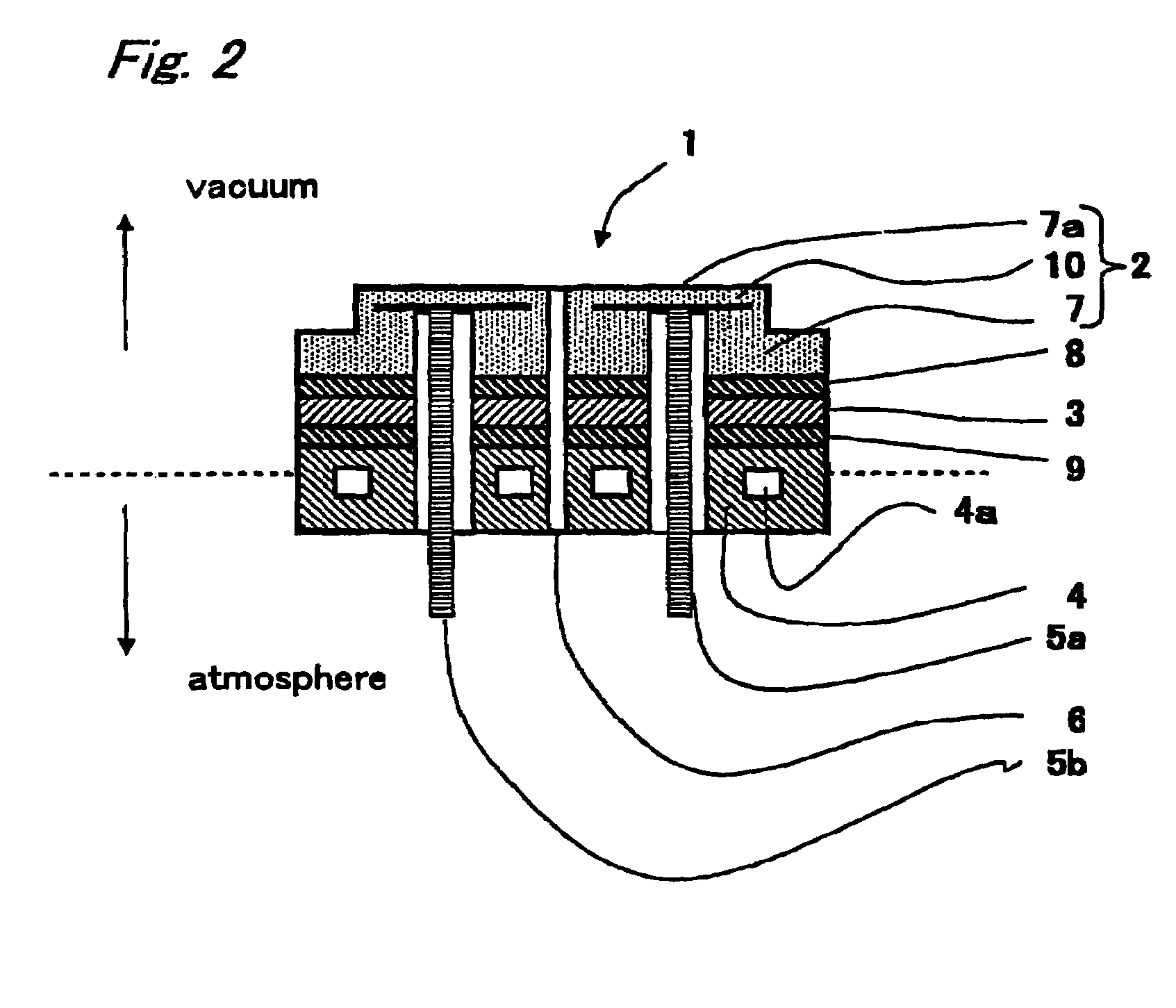Composite material, wafer holding member and method for manufacturing the same
a technology of holding member and composite material, which is applied in the direction of conveyor parts, turning machine accessories, chucks, etc., can solve the problems of not being able to meet the requirements of a single factor the failure of conventional composite materials to simultaneously satisfy all the factors of he leak rate, and the cracking of the plate base, etc., to achieve the effect of reducing the risk of slipping
- Summary
- Abstract
- Description
- Claims
- Application Information
AI Technical Summary
Benefits of technology
Problems solved by technology
Method used
Image
Examples
embodiment 1
[0068]FIG. 1A is a sectional view showing the first embodiment of the present invention. FIG. 1B is a explanatory view showing a measurement method of a leak rate.
[0069]A wafer holding member 1 includes a wafer holding portion 2 having a plate base 7, one principal plane of which serves as a placing surface 7a for mounting a wafer, and electrodes 10 provided either on the other principal plane or inside of the plate base 7; and a plate 4 composed of SiC, SiO2, and at least one out of Al and Si, wherein the wafer holding portion 2 and the plate 4 are joined to each other via a metal joint material 3 on a face opposite to the placing surface 7a of the wafer holding portion 2.
[0070]The plate base 7 is preferably formed of oxide ceramics, such as alumina, nitride ceramics, carbide ceramics. On the placing surface 7a, provided is a groove (not shown). When an argon gas of the like is supplied through a gas feeding hole 6 passing through the wafer holding portion 2, a space between a wafe...
embodiment 2
[0109]FIG. 2 is a sectional view showing the second embodiment of the present invention, and FIG. 3 is a plan view thereof.
[0110]The wafer holding member 1 includes a wafer holding portion 2a having a plate ceramic body 7, one principal plane of which serves as a placing surface 7a for mounting a wafer, and an electrode 10 provided either on the other principal plane or inside of the plate ceramic body 7, a composite plate 4 containing SiC, aluminum and silicon, a metal layer 8 provided on a face opposite to the placing surface 7a of the wafer holding portion 2, and a metal layer 9 provided on a face of the composite plate 4, wherein the wafer holding portion 2 and the composite plate 4 are joined to each other via a metal joint material 3 between the metal layers 8 and 9.
[0111]The plate ceramic body 7 is preferably formed of oxide ceramics, such as alumina, nitride ceramics, carbide ceramics. On the placing surface 7a, provided is a groove (not shown). When an argon gas of the like...
example 1
[0145]A fusion solidified body containing 74 mass % of SiC, 15.6 mass % of Al, 10.4 mass % of Si, and another solidified body containing 84.4 mass % of SiC, 15.6 mass % of Al, 0 mass % of Si, and the other solidified body containing 89.6 mass % of SiC, 0 mass % of Al, 10.4 mass % of Si, were produced. Then, while changing time of soaking each of the fusion solidified bodies in ethyl silicate, each composite material having a different content of SiO2 was produced. The produced composite material had dimensions of 50 mm×50 mm×5 mm.
[0146]Then, each He leak rate was measured. Measurement of He leak rate included steps of finishing the surface of the above-mentioned composite material up to a roughness of Ra 0.1 to 0.2 μm using diamond powder of 5 μm, followed by attaching the surface of the composite material with a metal pipe integrated with an O-ring having an internal diameter of 30 mm and an external diameter of 34 mm, followed by vacuuming the inside room of the pipe, followed by ...
PUM
| Property | Measurement | Unit |
|---|---|---|
| internal diameter | aaaaa | aaaaa |
| thermal conductivity | aaaaa | aaaaa |
| thermal conductivity | aaaaa | aaaaa |
Abstract
Description
Claims
Application Information
 Login to View More
Login to View More - R&D
- Intellectual Property
- Life Sciences
- Materials
- Tech Scout
- Unparalleled Data Quality
- Higher Quality Content
- 60% Fewer Hallucinations
Browse by: Latest US Patents, China's latest patents, Technical Efficacy Thesaurus, Application Domain, Technology Topic, Popular Technical Reports.
© 2025 PatSnap. All rights reserved.Legal|Privacy policy|Modern Slavery Act Transparency Statement|Sitemap|About US| Contact US: help@patsnap.com



